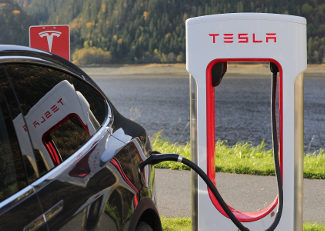Recession Danger Signals Just Won’t Go Away
Suppose you’re driving along and you see that nagging “Check Engine” light. After a white-knuckle drive to the shop your mechanic looks over the car, says everything seems to be working okay and resets the light. The next day, on it comes again. You’re pretty sure the car’s okay, but that incessant light nags at you all the same. If the global economy were a giant car that’s pretty much the situation we’re in today. Everything looks all right, but those pesky recession signals just won’t stop.
In January and February the danger signs were glaring. Stocks were in free fall, along with oil prices. The bond market was in chaos and the dollar was headed up while inflation remained static. In fact, it was so low that deflation took its place as the big risk factor. Deflation, marked by falling prices for goods and services, puts downward pressure on corporate profits. Combine that pressure on profits with the rising dollar, which torpedoes overseas sales, and you have the formula for a slowing economy and recession, one which an increasing number of experts are predicting with escalating urgency.
It’s Happened Before
What we’re experiencing in this country today is in some ways what China was experiencing back in 2015. China steadfastly refuses to call its slowdown a recession but only if you stick to the technical definition. If you apply the same standard to its growth rate, China’s slowdown is, in some ways, worse than a recession. As it is China’s exchange rate is unsustainable at the rate they’re burning through capital reserves. With growth at its lowest point in twenty-five years, another globally devastating sudden devaluation of the yuan, like the one that caused last year’s August Crash, is still possible—even likely.
We’re Not Growing
Here in the U.S., our GDP growth slumped to less than one percent, signaling that the economy was barely keeping its head above water. In addition, the Fed lowered its growth forecast for the year. A lot depends on consumers and the numbers suggest consumers are pulling back on spending, putting an ongoing dent in corporate profits.
Americans Still Feeling Spooked
It seems odd that consumers would be closing their wallets at a time when life should be getting better. But we’re not spending the extra money we’re saving on energy prices. The tight labor market is putting upward pressure on wages and jobs are plentiful. You’d think the stage would be set for a renaissance in consumer spending but just the opposite is happening. Perhaps Americans remain wary of another 2008-style meltdown; once bitten, twice shy. What’s certain is that if consumers don’t open their wallets, we really could see another recession.
Markets Are Not the Economy
It’s also good to remember that the market and economy can be sending out contradictory signals. Back in January and February the markets were putting out clear recession signals and the VIX, the measure of market volatility, was higher than it is today. But the really bad news hiding in an otherwise okay current assessment of the economy is the 11.5% drop in corporate profits, the sharpest since 2008. A steep drop in corporate profits precedes nearly every recession because companies cut back on hiring and expansion projects. When the layoffs start (and they already have) then consumers completely shut down discretionary spending, even if they don’t personally feel under the threat from the ax.
Too many young people in the job market today grew up watching their parents agonize over job losses and millions got tossed out of their homes at an age where such events can carve out a lifetime of insecurity. So for right now consumers are wary but they haven’t yet gone fully defensive. Keep an eye on corporate profits; if profits stay low more layoff announcements will surely follow. If that happens expect drastic cuts in consumer spending, which will lead to more layoffs and the recession will be well underway.



Leave a Reply